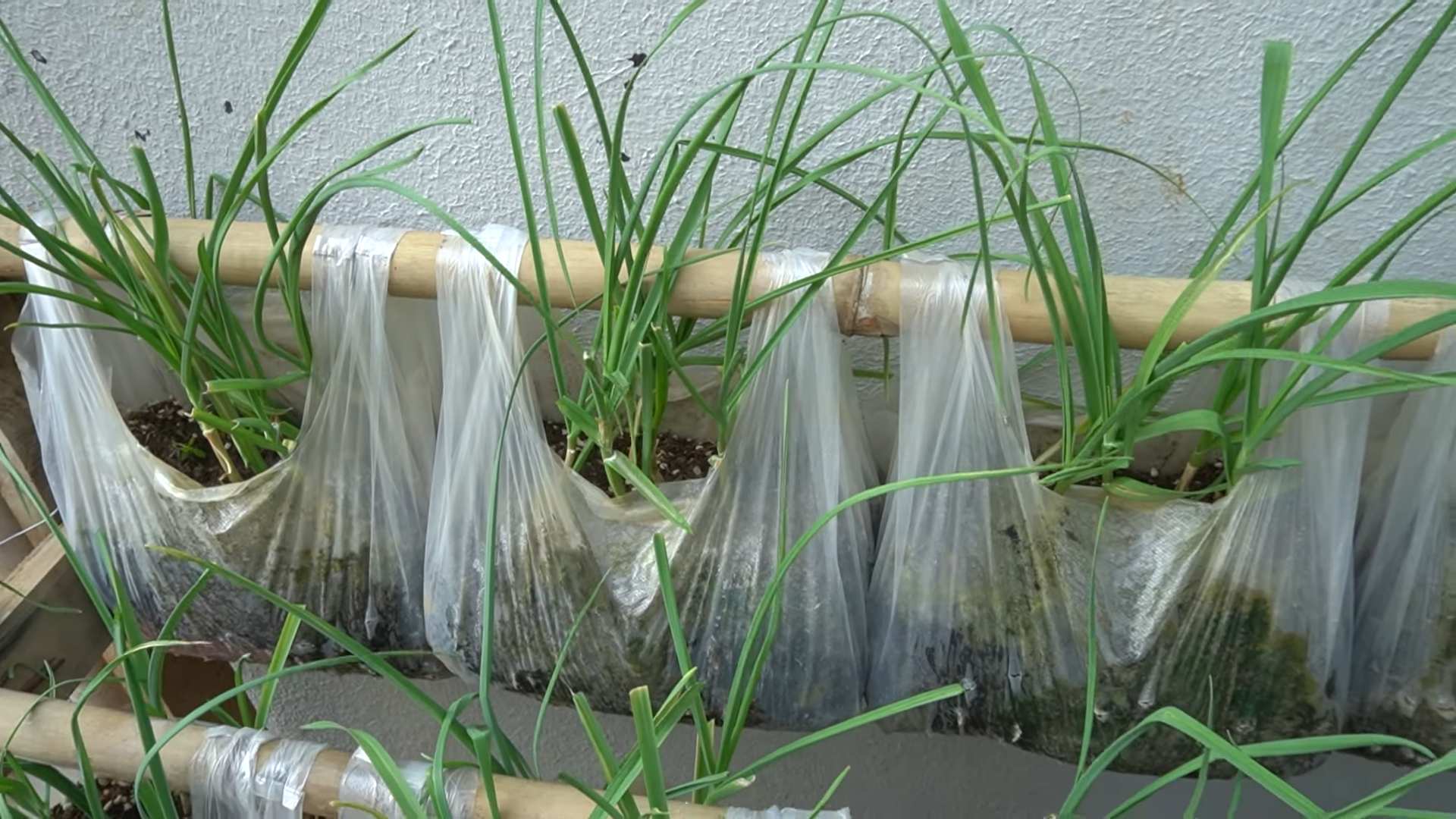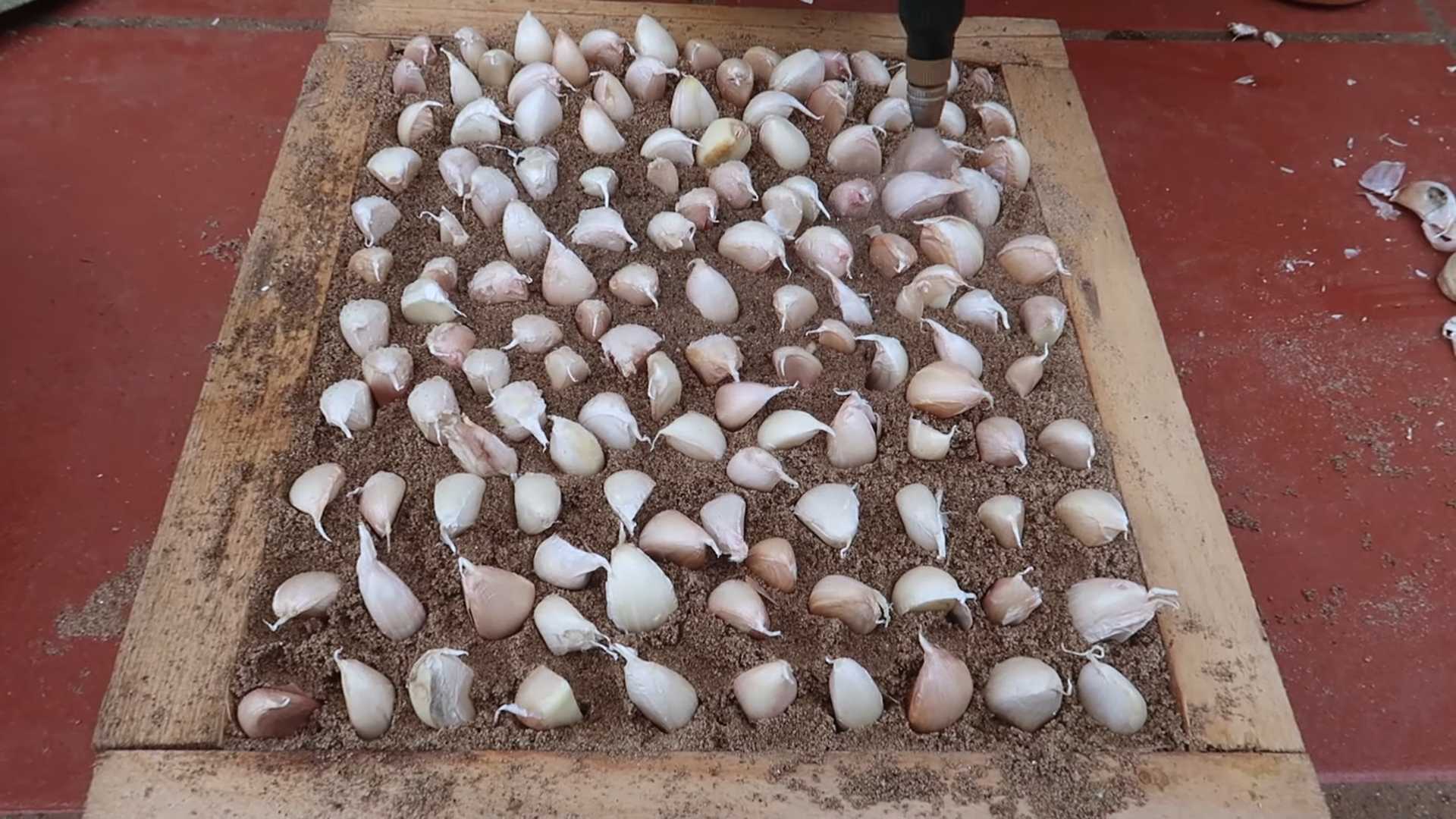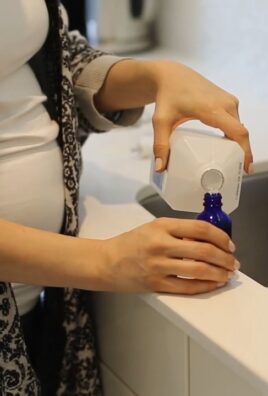Garlic peeling hack: Is there anything more frustrating than trying to peel garlic cloves? I know, I’ve been there! You’re prepping a delicious meal, the aroma of sautéed onions is already filling the kitchen, and then BAM! You hit the garlic peeling roadblock. Those tiny, papery skins clinging stubbornly to each clove can feel like a culinary curse.
Garlic, a staple in cuisines worldwide for centuries, has a rich history. From ancient Egypt, where it was given to pyramid builders for strength, to its use in traditional medicine across cultures, garlic’s culinary and medicinal value is undeniable. But let’s be honest, its potent flavor comes at a price: the dreaded peel!
That’s why I’m so excited to share this game-changing garlic peeling hack with you. Forget struggling with knives, smashing cloves into oblivion, or spending precious minutes wrestling with those pesky skins. This simple DIY trick will revolutionize your cooking experience, saving you time and frustration. Imagine effortlessly peeling an entire head of garlic in seconds! Sounds too good to be true? Keep reading, and I’ll show you how. Trust me, once you master this, you’ll wonder how you ever lived without it!

The Ultimate Garlic Peeling Hack: Say Goodbye to Sticky Fingers!
Okay, let’s be honest, who actually *enjoys* peeling garlic? It’s fiddly, your fingers end up smelling like garlic for days, and sometimes you feel like you’ve lost half the clove in the process. Well, my friends, I’m here to share a game-changing garlic peeling hack that will revolutionize your cooking prep! I’ve tried a bunch of methods, and this one is by far the fastest and most effective. Get ready to ditch the frustration and embrace perfectly peeled garlic in seconds!
What You’ll Need
Before we dive in, let’s gather our supplies. This hack is wonderfully simple, so you won’t need much:
* A head of garlic (obviously!)
* Two bowls (preferably metal, but any sturdy bowls will do)
* A flat surface (your countertop or a cutting board works great)
The Shake-and-Bake Method: Peeling Garlic Like a Pro
This method relies on the power of shaking to separate the garlic cloves from their papery skins. It sounds crazy, but trust me, it works like magic!
1. Separate the Head into Cloves: Start by breaking apart the head of garlic into individual cloves. Don’t worry about peeling them at this stage; just get them separated. I usually just use my hands for this, but you can use a knife if you prefer. Just be careful not to cut yourself!
2. Place the Cloves in a Bowl: Take one of your bowls and place all the separated garlic cloves inside.
3. Cover with the Second Bowl: Now, take the second bowl and place it upside down on top of the first bowl, creating a sealed container. Make sure the rims of the bowls line up nicely to prevent any cloves from escaping during the shaking process.
4. Shake, Shake, Shake! This is the fun part! Hold the two bowls firmly together (I like to use both hands for extra security) and shake them vigorously for about 15-20 seconds. The harder you shake, the better the results! Imagine you’re making a garlic-powered maraca.
5. Check the Results: After shaking, carefully separate the bowls. You should find that most of the garlic cloves have been peeled, or at least the skins have been loosened significantly.
6. Separate the Peeled Cloves: Pick out the cloves that are completely peeled and set them aside.
7. Repeat if Necessary: For any cloves that still have their skins on, you can either shake them again for a few more seconds or peel them manually. Usually, after the initial shaking, the skins are much easier to remove.
Alternative Method: The Microwave Trick (Use with Caution!)
This method is even faster, but it can sometimes slightly cook the garlic if you’re not careful. I recommend using it only when you’re in a real hurry.
1. Separate the Cloves: Just like before, start by separating the head of garlic into individual cloves.
2. Microwave Briefly: Place the unpeeled cloves in a microwave-safe bowl or on a plate. Microwave on high for only 10-15 seconds. Important: Keep a close eye on the garlic while it’s in the microwave. You don’t want it to start cooking!
3. Let Cool Slightly: Carefully remove the garlic from the microwave and let it cool for a few seconds. It will be hot!
4. Squeeze and Pop: The skins should now be very easy to remove. Simply squeeze the clove gently, and the garlic should pop right out of its skin.
Important Note: Microwaving garlic can sometimes make it slightly softer and less pungent. If you’re using raw garlic in a recipe, you might want to stick with the shaking method.
The Single Clove Smash: For When You Only Need One
Sometimes you only need a single clove of garlic, and you don’t want to go through the whole shaking process. This method is quick and easy for those situations.
1. Place the Clove on a Flat Surface: Put the unpeeled garlic clove on your cutting board.
2. Smash with the Side of a Knife: Place the flat side of a large knife (like a chef’s knife) on top of the clove. Use the palm of your hand to gently but firmly press down on the knife, smashing the clove.
3. Peel Away the Skin: The skin should now be loose and easy to peel away.
Troubleshooting and Tips for Success
Even with these methods, you might encounter a few hiccups. Here are some tips to help you achieve garlic-peeling perfection:
* Freshness Matters: The fresher the garlic, the easier it will be to peel. Older garlic tends to have drier, more tightly clinging skins.
* Bowl Material: Metal bowls tend to work best for the shaking method because they’re more durable and create a better seal. However, any sturdy bowls will work in a pinch.
* Shaking Technique: Don’t be afraid to shake vigorously! The more force you apply, the better the cloves will separate from their skins.
* Microwave Timing: Be very careful not to over-microwave the garlic. Start with 10 seconds and add a few seconds at a time if needed. Overcooked garlic will be mushy and unpleasant.
* Sticky Skins: If the skins are still stubbornly clinging to the cloves, try soaking them in warm water for a few minutes before peeling. This can help to loosen the skins.
* Garlic Press Considerations: While these methods are great for peeling garlic, remember that a garlic press can sometimes impart a bitter taste to the garlic. If you’re using a garlic press, try to use the peeled garlic within a few minutes to minimize bitterness.
* Storing Peeled Garlic: If you peel a whole head of garlic, you can store the peeled cloves in an airtight container in the refrigerator for up to a week. You can also freeze them for longer storage.
* Dealing with Garlic Smell: To remove the garlic smell from your hands, try rubbing them with stainless steel (like your sink or a stainless steel spoon) under cold running water. The stainless steel helps to neutralize the sulfur compounds that cause the odor. You can also try rubbing your hands with lemon juice or coffee grounds.
Why This Hack Works So Well
The shaking method works because the cloves bumping against each other inside the bowls create friction that loosens the skins. The microwave method works by steaming the garlic slightly, which also helps to loosen the skins. The single clove smash simply breaks the skin, making it easier to peel.
I hope these tips and tricks help you conquer the dreaded garlic peeling task! With a little practice, you’ll be peeling garlic like a pro in no time. Happy cooking!

Conclusion
So, there you have it! This garlic peeling hack isn’t just a neat trick; it’s a game-changer for anyone who cooks regularly. Think about all the time you’ve spent painstakingly peeling garlic cloves, only to end up with sticky fingers and a lingering garlic scent that just won’t quit. This method eliminates all of that frustration, allowing you to prep your garlic in seconds, leaving you more time to focus on the actual cooking and, more importantly, enjoying your delicious meal.
Why is this a must-try? Because it’s simple, effective, and requires no special equipment. You probably already have everything you need in your kitchen right now. It’s a small change that makes a huge difference in your cooking routine. Imagine effortlessly adding fresh garlic to your pasta sauces, stir-fries, roasted vegetables, and homemade dips without the usual hassle. The possibilities are endless!
Beyond the basic method, feel free to experiment with variations. For instance, if you’re dealing with particularly stubborn garlic, try soaking the cloves in cold water for about 10 minutes before shaking them. This can help loosen the skins even further. Another variation involves using two metal bowls instead of one bowl and a lid. The principle remains the same – the friction between the cloves and the bowls does the work – but some find it even more effective. You can also adjust the shaking time based on the freshness and size of the garlic cloves. Older garlic might require a bit more vigorous shaking.
Don’t be afraid to get creative! You can even use this method to peel larger quantities of garlic at once, perfect for meal prepping or when you’re cooking for a crowd. Just make sure your bowl is large enough to accommodate all the cloves without overcrowding.
We’re confident that once you try this garlic peeling hack, you’ll never go back to the old way. It’s a true kitchen shortcut that will save you time and effort, making your cooking experience more enjoyable.
So, what are you waiting for? Give it a try! We’re eager to hear about your experience. Did it work as well for you as it did for us? Did you discover any helpful variations or tips? Share your thoughts and photos in the comments below. Let’s build a community of garlic-peeling pros! We believe this simple yet effective technique will revolutionize your kitchen routine. Embrace the ease and efficiency of this method and say goodbye to garlic-peeling woes forever. This truly is the best way to peel garlic!
Frequently Asked Questions (FAQ)
Q: What kind of container works best for this garlic peeling hack?
A: Ideally, you want to use a container with a tight-fitting lid. A stainless steel bowl with a lid is excellent because the metal surface provides good friction. However, a sturdy plastic container with a secure lid will also work well. The key is to ensure the lid stays firmly in place during shaking to prevent any garlic cloves from escaping. Glass containers can be used, but be extra careful to avoid breakage during the shaking process. Make sure the container is large enough to allow the garlic cloves to move freely inside. Overcrowding the container will reduce the effectiveness of the method.
Q: How long should I shake the garlic?
A: The shaking time can vary depending on the freshness and size of the garlic cloves. Generally, 15-20 seconds of vigorous shaking is sufficient. However, if you’re dealing with older garlic or larger cloves, you might need to shake for a bit longer, perhaps up to 30 seconds. After the initial shaking, check the garlic to see if the skins have loosened. If not, give it another 10-15 seconds of shaking. The goal is to loosen the skins enough so that they easily slip off when you separate the cloves.
Q: What if the garlic cloves are still difficult to peel after shaking?
A: If the garlic cloves are still stubborn, there are a few things you can try. First, soak the unpeeled cloves in cold water for about 10 minutes before shaking. This can help to hydrate the skins and make them easier to remove. Second, try using a different container with a rougher surface, as this will increase the friction. Third, ensure you’re shaking the container vigorously enough. A good, strong shake is essential for the method to work effectively. Finally, if all else fails, you can always resort to peeling the remaining cloves by hand, but hopefully, this will only be a few.
Q: Can I use this method to peel a large quantity of garlic at once?
A: Yes, you can absolutely use this method to peel a large quantity of garlic. Just make sure you have a container that is large enough to accommodate all the cloves without overcrowding. Overcrowding will reduce the effectiveness of the shaking. You might also need to shake for a longer period of time to ensure all the cloves are properly peeled. For very large quantities, it might be more efficient to divide the garlic into smaller batches and peel them separately.
Q: Does this method work with all types of garlic?
A: This method generally works well with most types of garlic. However, the effectiveness can vary slightly depending on the variety and freshness of the garlic. Freshly harvested garlic tends to have tighter skins and might require a bit more shaking or soaking. Older garlic, on the other hand, might peel more easily. Experiment with different types of garlic to see what works best for you.
Q: Will this method damage the garlic cloves?
A: When done correctly, this method should not damage the garlic cloves. The shaking action is designed to loosen the skins, not to crush or break the cloves. However, it’s important to use a container that is not too small, as overcrowding can increase the risk of damage. Also, avoid shaking the container too violently, as this could potentially bruise the cloves.
Q: How should I store the peeled garlic after using this method?
A: Once you’ve peeled the garlic, it’s important to store it properly to maintain its freshness and flavor. You can store peeled garlic cloves in an airtight container in the refrigerator for up to a week. Alternatively, you can freeze the peeled cloves for longer storage. To freeze, spread the cloves out on a baking sheet and freeze them until solid. Then, transfer them to a freezer-safe bag or container. Frozen garlic can be used directly from the freezer in your cooking. Another option is to mince the garlic and store it in olive oil in the refrigerator. This will help to preserve the garlic and infuse the oil with its flavor.
Q: Is there any way to reduce the garlic smell on my hands after handling the garlic?
A: Yes, there are several ways to reduce the garlic smell on your hands. One effective method is to rub your hands on a stainless steel object, such as a spoon or your kitchen sink, under cold running water. The sulfur compounds in garlic bind to the stainless steel, neutralizing the odor. You can also try washing your hands with lemon juice or vinegar, as these acidic substances can help to break down the garlic compounds. Another option is to use a coffee scrub, as the coffee grounds can help to absorb the odor.
Q: Can I use this method to peel other types of bulbs, like shallots or onions?
A: While this method is primarily designed for peeling garlic, it might also work to some extent with other types of bulbs, such as shallots or small onions. However, the effectiveness may vary depending on the size, shape, and skin texture of the bulb. It’s worth experimenting to see if it works for you, but be prepared to adjust the shaking time and technique accordingly. For larger onions, this method is unlikely to be effective.




Leave a Comment